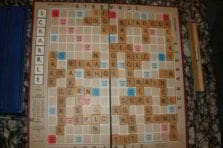Overall aim:
Reflect on the relevance of the application of the Communicative Interaction hypothesis in second language learners’ centered classroom.
Particular aims:
Have teachers and learners get aware of their roles and implications on this important issue of second language learning process.
Provide the target language learning as well as the target language use factors and variables that may be taken into account for achieving the effectiveness of Communicative Interaction in learners centered classroom.
Maximize the usefulness of learners’ needs, meanings and social experiences in second language learners’ centered classroom.
Pinpoint the relevance of the application of Communicative Interaction hypothesis and its effectiveness on a practical level.
Introduction
Taking as the main source the Communicative Language Teaching Approach as well as the Learners’ centered classroom Approach besides that, taking also into account their dialectical relationship, we tend to state that the Classroom Interaction hypothesis may be regarded as something very meaningful to be considered by all teaching staffs regardless the kind of foreign language or the level they are to deal with in their classrooms.
Throughout this article, the authors will try to portray their theoretical minds while as pinpoint the roles of our learners and teaching trends as well as when to achieve classical effectiveness in Classroom Interaction. It not only has to do with Teaching experiences but also, with awareness i.e. the role of the learners in the learning process.
For instance, we will refer to the different kinds of learners we usually may have in the classrooms:
- Visual learners.
- Auditory learners.
- Kina esthetic learners.
- Slow learners.
- Mind retarded learners among others.
We, teachers while planning lessons may take into account all these facts and so, we may devote a room to every kind of learner we may have in the classroom as well i.e. their moods, feelings, needs, and social experiences are to be graded in the different tasks they will perform during the lesson. It is a real show. It is a real mixture. All to do, all to plan may be regarded as real Classroom Interaction as such. Think about classroom atmosphere whether learners are alike or not social, psychological or physically speaking. Think about their ages, backgrounds, profiles or jobs. Even, think about their likes or dislikes. This will help a lot, for sure.
Development
Here comes some concepts that will refresh the memories of all teaching staff readers of this article in question and furthermore, they all will help them get aware of their roles and implications of the relevance of the second language learner centered classroom learning process specifically focusing on Interaction:
Cognitive processes are the mental processes involved in thinking, understanding or learning.
Learner training has been known as the use of activities to help students understand how they learn and help them to become independent learners.
Learning resources are the materials or tools which help students learn, e.g. books, computers, cassettes, etc.
Learning strategies are seen as the techniques which a student consciously uses when learning or using language, e.g. deducing the meaning of words from context, predicting content before reading.
Interaction is known as ‘two-way communication’. Interactive strategies are the means used, especially in speaking, to keep people involved and interested in what is said, e.g. eye contact, use of gestures, functions such as repeating, asking for clarification, and the like.
The four language skills are listening, speaking, reading and writing. Each skill can be divided into smaller sub skills that are all part of the same skill, e.g. identifying text organization (reading); identifying word stress (listening).
Feedback is extremely important in every learning process. Right now, our minds are based on learning rather than Teaching. Teachers only ought to teach students how to learn on an easy basis. Teachers’ main role is to teach how to learn while as students’ main role is to learn how to learn on an easier basis.
Taking into account students’ opinions about the outcomes of each lesson will lead teachers to a positive feedback. Social life events are important to be seen and discussed in our lessons too.
Diaries, interviews and surveys are to be worked out and included in our lessons. Bilingual dictionaries and their accurate use may become an useful tool to work within each lesson.
The different stages of the learning process as well as the different levels of assimilation of new input may be regarded as the most relevant factors while achieving the effectiveness of our so-called Classroom Interaction. A simple task may be regarded as effective and graded as positive by our learners if these mentioned factors above are taking into account while planning our lessons. Remember that learners centered classrooms may be very exciting and outstanding.
Regarding the variables we, teachers may consider our lesson planning or learning action plans right procedures for instance, when dealing with learner to learner interactions (first, think how meaningful they may be to them) or while dealing with Teacher to learner interactions ( please, measure how useful or meaningless they may be according to the lesson action plan itself). Thus, it should be based mainly on the learners’ needs and interests.
Here, we should make reference to the different techniques or procedures we may master in order to achieve the authentic so-called Classroom Interaction in each of the lessons such as pair work, peer work, group work and presentations. Within them, the authors suggest to work out mini dialogues, simulations, problem-solving activities tasks and so on and so forth, ( based on real life situations most of the time). Besides that, the addition of authentic materials to the lessons either video games, song lyrics or texts ought to be regarded as a great help to grasp main ideas of the Idiosyncrasy of some English speaking countries and their inhabitants. Furthermore, they absolutely may lead to the achievement and effectiveness of Communicative Interaction in Second Language learner centered classroom.
It is absolutely wise to pinpoint that all the procedures above mentioned should be graded in use according to the target language learning process developmental stage i.e. taking always into account the principles from easy to difficult; from general to particular; from the known to the unknown.
Finally, encouraging Teachers and learners to write up a diary of their own classroom experiences and feelings including outstanding, positive, and negative facts or not may bring about a bunch of reasons and variables good, indeed to improve our lessons and so, to provide the right conditions for a better classroom interaction. Thus, better learning process outcomes at the end, happily speaking.
Conclusions
This article may be considered as the starting point of further studies and research. In fact, it constitutes the body of an old research that the authors could not possibly afford because of financial reasons.
It is absolutely needed to pinpoint the relevance of the application of Communicative Interaction hypothesis and its effectiveness on a practical level. The achievement of this effectiveness mainly depends on the teaching experience of the teaching staff, and on particular, Fluency has to do a lot with it. Regardless, to refer to the interests, needs and feelings of the learners in question.
We, teachers know that every lesson should be planned in advance and all details should be also predicted and taken into consideration in advance; i.e. the point is not to go and teach but, to go and teach how properly to learn the target language and enjoy the lesson from the learners’ side, instead. The authors even think that most of the time, teachers may feel like learners while working out with each action lesson plan. Regardless to state that each class may have its own action lesson plan no matter learners are on the same learning developmental stage or profile but, as teachers, we absolutely know that there are special peculiarities such as age, motivation, purpose, among others that should not be mixed in each of them.
Now, it is the right time to clarify some ideas that have been stated in this article several times:
Classroom Interaction Hypothesis always focuses on Activity-based learning i.e. a way of learning by doing activities. The rules of language are looked at either after the activity or not at all.
Communicative Approach stands for a way of teaching which is based on the principle that learning a language successfully involves communication rather than just memorizing a series of rules. We, teachers try to focus on meaningful communication, rather than focusing on accuracy and correcting mistakes all the time. And, here comes the main aim of Classroom Interaction Hypothesis while as using this Approach in learner centered classroom.
Learner centered classroom, it means the classroom where learners take the main role and also take part in most of the time of the lesson. Teachers are only providers and facilitators of the new input during the whole class. Furthermore, it means that in this kind of classroom, teachers are to have a good mastery of the target language as well as a good background of Teaching and Learning Knowledge skills.
Meaningful stands for either something which shows the meaning of language or something which has a value for students in the real world. The authors refer to the latter in most parts of this article.
Teaching strategy involves the procedure or approach used by a teacher in the classroom , e.g. a teacher may choose to give thinking time to students before they speak.
A Task is an activity which students complete which has a definite result. For example, problem-solving activities or information-gap activities are tasks.
Role-Play stands for a classroom activity in which students are given roles to act out in a given situation and mainly based on real life ones.
Survey occurs when students find out information from others by asking questions or using questionnaires in order to practice.
Finally, in the article when the authors refer to the target language, they refer either to the language being studied, L2 or to the language which is the focus of the lesson or a part of the lesson. It could be grammar, lexis, functions or pronunciation. The authors refer to the former concept most of the time all throughout this paper.
After clarifying all these terms; it comes to encourage teachers to deeply think about the so-called Classroom Interaction Hypothesis and to arrive to their own conclusions too.
It may be a good idea to share new experiences and to back up this hypothesis with some other colleagues’ minds about this very issue.
Finally, the authors will thank all kinds of comments about this article.

